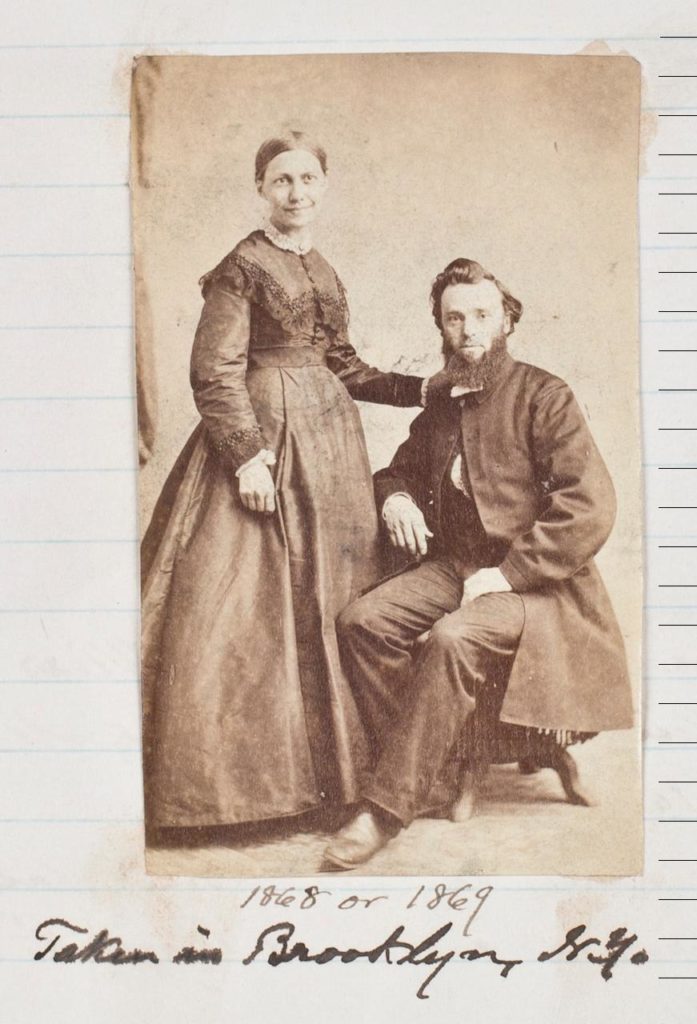 Earlier this year the American Antiquarian Society acquired an important archive of manuscripts and drawings related to American missionary activity in Western Africa. The collection tells the story of a couple, Emily Griswold (1838-1906) and her eventual husband, Benjamin Hartley (1838-1912). Emily was the daughter of the poet and publisher Rufus Wilmot Griswold, who edited anthologies, gift books, and newspapers in Philadelphia and New York. Rufus Griswold is best known today for his rivalry with Edgar Allan Poe, and is something of a larger-than-life figure in American publishing history. When the Society’s curators were first contacted about the archive, in fact, it was the connection to Rufus that enticed us to take a closer look.
Earlier this year the American Antiquarian Society acquired an important archive of manuscripts and drawings related to American missionary activity in Western Africa. The collection tells the story of a couple, Emily Griswold (1838-1906) and her eventual husband, Benjamin Hartley (1838-1912). Emily was the daughter of the poet and publisher Rufus Wilmot Griswold, who edited anthologies, gift books, and newspapers in Philadelphia and New York. Rufus Griswold is best known today for his rivalry with Edgar Allan Poe, and is something of a larger-than-life figure in American publishing history. When the Society’s curators were first contacted about the archive, in fact, it was the connection to Rufus that enticed us to take a closer look.
As is often the case with such collections, however, it soon became apparent that the real treasure of the collection was not about Rufus at all, but was material related to what we all started calling “The Emily & Benjamin story.” After surviving near-death during a railroad accident, Emily devoted herself to missionary work. In 1860, at the age of twenty-two, she traveled to Liberia as part of an Episcopal mission. She wrote letters home to her aunt as the American Civil War raged and by all accounts enjoyed living in the lush climate of coastal Africa, far away from the war. In 1864, the Scottish-born artist Benjamin Hartley also arrived in Africa. Educated at the Theological Seminary in Gambier, Ohio, formerly associated with Kenyon College, Hartley was ordained in Brooklyn, New York, in May of 1864, and by July was in Cape Palmas, Liberia. The two missionaries met, worked and prayed together, and eventually fell in love. Just a year after his arrival, Benjamin and Emily, both aged twenty-seven, married in Cape Palmas.
 When he traveled to Africa in 1864, Benjamin carried with him empty sketch books, inks, watercolors, and, most surprisingly perhaps, a camera. He used them all to document the world around him, so different from Scotland and Ohio. He drew and painted the people, their homes, the harbor, and the plants, animals, and architecture of Cape Palmas, Fishtown, the Hoffman river basin, and nearby communities of the Grebo (Kru) people. Dozens of his drawings and watercolors are preserved in the family collection. Benjamin even photographed the church where he and Emily worked and said their vows—his 1865 albumen photo is pasted into the family scrapbook (see above). Images of the American missionary towns of West Africa from this period are extremely rare, and I realized that this part of the Emily & Benjamin story could be a valuable visual resource for scholars.
When he traveled to Africa in 1864, Benjamin carried with him empty sketch books, inks, watercolors, and, most surprisingly perhaps, a camera. He used them all to document the world around him, so different from Scotland and Ohio. He drew and painted the people, their homes, the harbor, and the plants, animals, and architecture of Cape Palmas, Fishtown, the Hoffman river basin, and nearby communities of the Grebo (Kru) people. Dozens of his drawings and watercolors are preserved in the family collection. Benjamin even photographed the church where he and Emily worked and said their vows—his 1865 albumen photo is pasted into the family scrapbook (see above). Images of the American missionary towns of West Africa from this period are extremely rare, and I realized that this part of the Emily & Benjamin story could be a valuable visual resource for scholars.
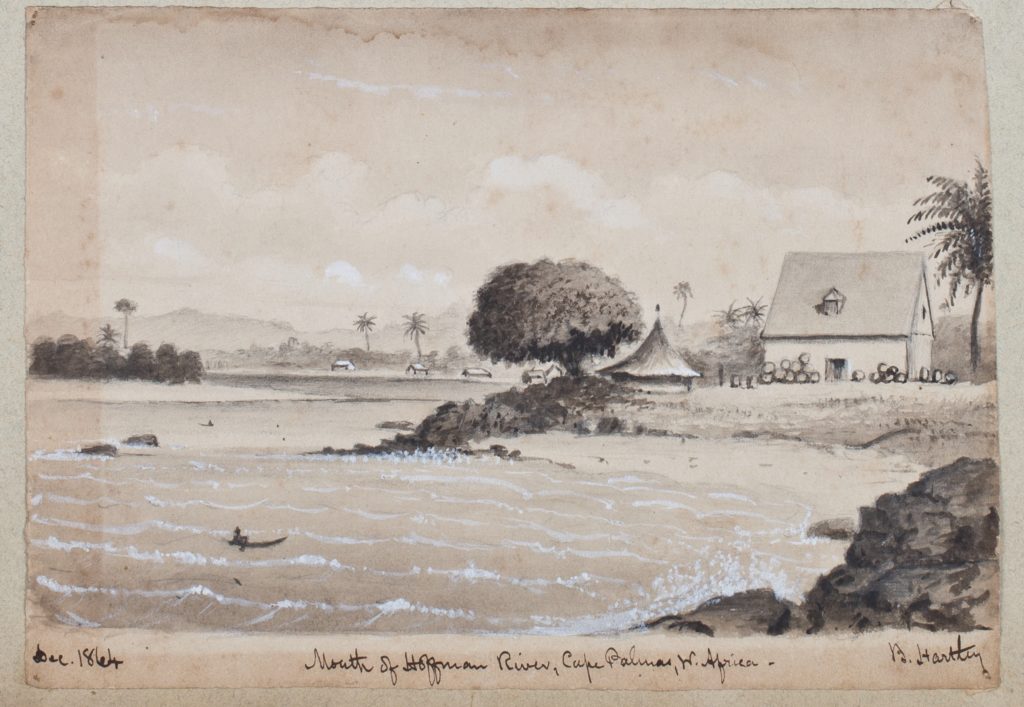 But there was more to the family collection than just important and evocative drawings and photos. During a visit to assess the condition and breadth of the artwork, I was invited by the dealer handling the transaction to have a look at some manuscript and printed material as well. Throughout their lives, both Emily and Benjamin wrote prolifically—Benjamin kept a diary during his
But there was more to the family collection than just important and evocative drawings and photos. During a visit to assess the condition and breadth of the artwork, I was invited by the dealer handling the transaction to have a look at some manuscript and printed material as well. Throughout their lives, both Emily and Benjamin wrote prolifically—Benjamin kept a diary during his 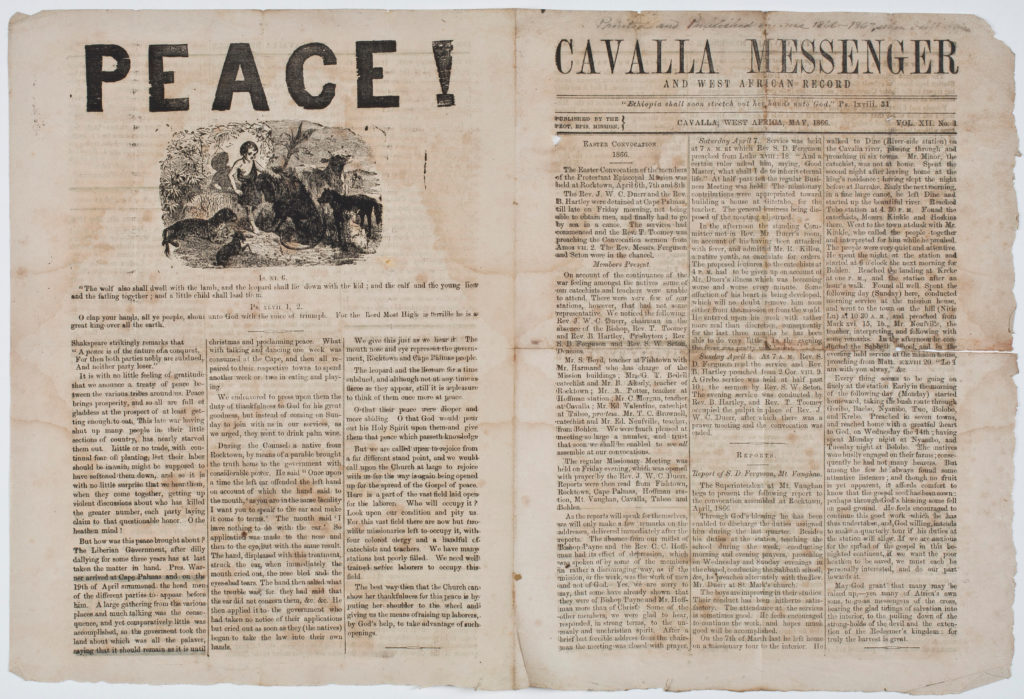 years at Gambier, Emily corresponded with family and friends around the world. Benjamin edited and printed a missionary newspaper in Africa (see left). Both of them wrote continuously about their time in Africa, with Emily producing articles and stories for the periodical press for decades after they returned to America and Benjamin writing sermons and giving public lectures about their experience. In fact, Rev. Hartley repurposed much of his imagery from Africa in a series of illustrated lectures on “African Life and Superstitions,” which he delivered at churches and Sunday schools around the United States in the 1870s, during Reconstruction. At this same time, Emily started writing moral tales for children. AAS already had four of her titles in our collection and so our curator of children’s literature was thrilled that the archive contained manuscripts of Emily’s unpublished writing, plus a scrapbook of her published work—all carefully clipped from newspapers and magazines and preserved by the author.
years at Gambier, Emily corresponded with family and friends around the world. Benjamin edited and printed a missionary newspaper in Africa (see left). Both of them wrote continuously about their time in Africa, with Emily producing articles and stories for the periodical press for decades after they returned to America and Benjamin writing sermons and giving public lectures about their experience. In fact, Rev. Hartley repurposed much of his imagery from Africa in a series of illustrated lectures on “African Life and Superstitions,” which he delivered at churches and Sunday schools around the United States in the 1870s, during Reconstruction. At this same time, Emily started writing moral tales for children. AAS already had four of her titles in our collection and so our curator of children’s literature was thrilled that the archive contained manuscripts of Emily’s unpublished writing, plus a scrapbook of her published work—all carefully clipped from newspapers and magazines and preserved by the author.
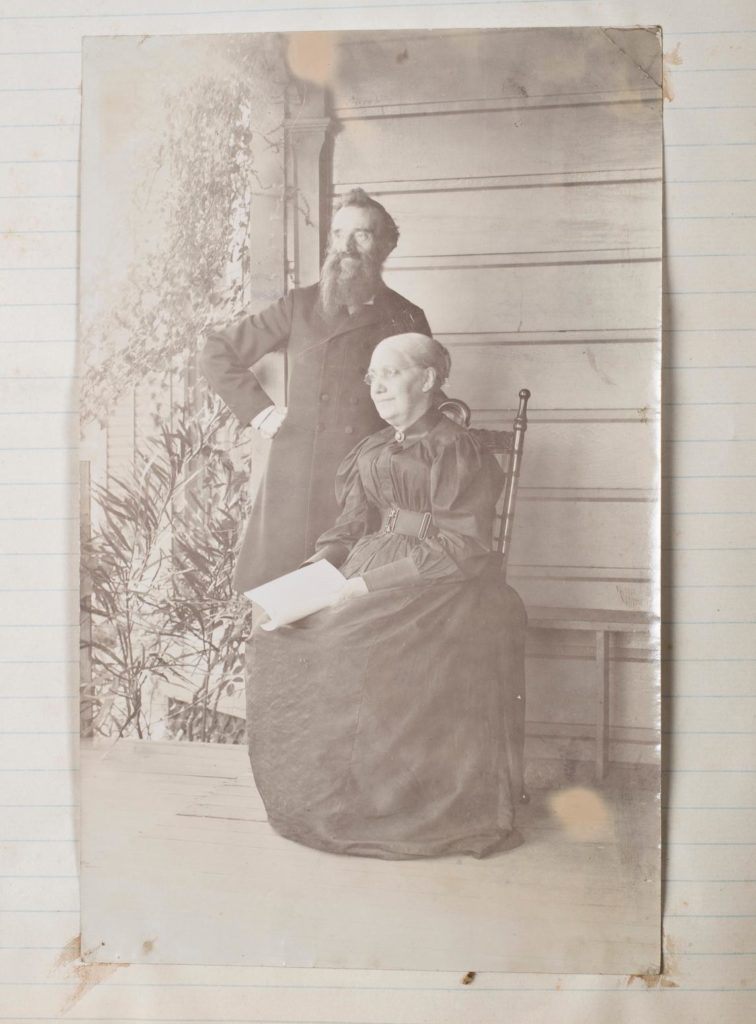 Fortunately for AAS, Emily and Benjamin’s descendants saved it all, including letters of rejection and acceptance for their various writings, the sketchbooks, the scrapbook, a handful of African newspapers, the Gambier diary, a scrapbook and diary of the couple’s time in Africa, and papers and sketches from after 1867 when they left Africa and lived in New York, Kansas, Missouri, and California. In the end there was some piece of the Emily & Benjamin story for each of the Society’s five collecting areas: drawings and artwork for the Graphic Arts Department, unpublished manuscripts for the Children’s Literature Department, diaries and letters related to the publishing trade for the Manuscript Department, missionary newspapers for the Newspaper Department, and the family Bible, with a complete Hartley genealogy, for the Books Department. Welcome to AAS, Emily and Benjamin!
Fortunately for AAS, Emily and Benjamin’s descendants saved it all, including letters of rejection and acceptance for their various writings, the sketchbooks, the scrapbook, a handful of African newspapers, the Gambier diary, a scrapbook and diary of the couple’s time in Africa, and papers and sketches from after 1867 when they left Africa and lived in New York, Kansas, Missouri, and California. In the end there was some piece of the Emily & Benjamin story for each of the Society’s five collecting areas: drawings and artwork for the Graphic Arts Department, unpublished manuscripts for the Children’s Literature Department, diaries and letters related to the publishing trade for the Manuscript Department, missionary newspapers for the Newspaper Department, and the family Bible, with a complete Hartley genealogy, for the Books Department. Welcome to AAS, Emily and Benjamin!

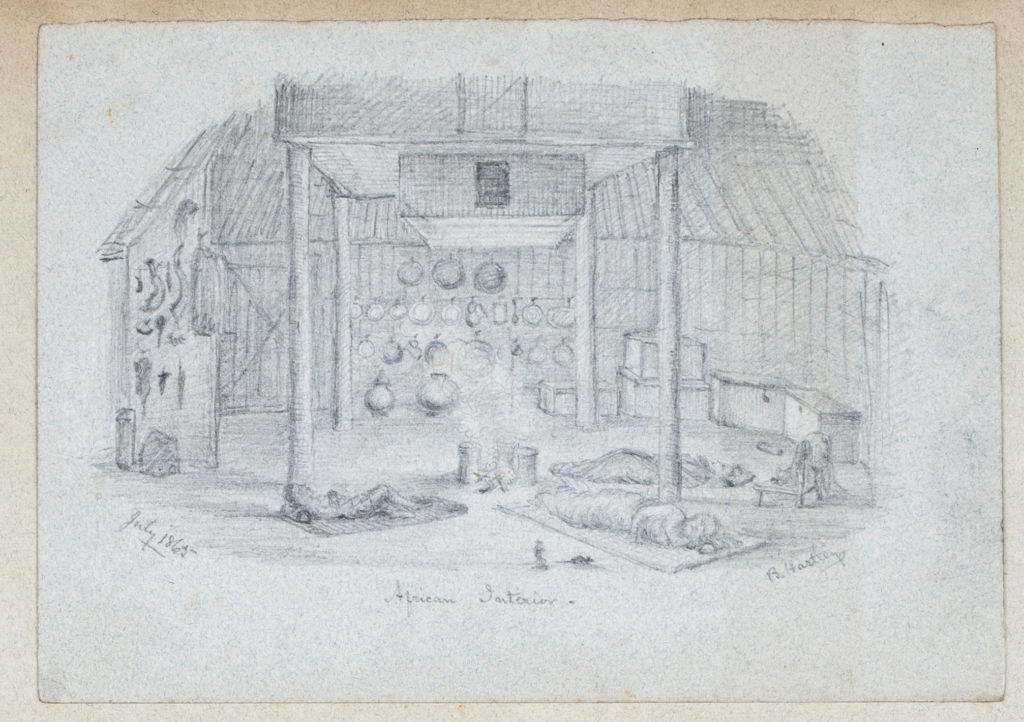
I am researching the diary of Louisa H.A. Minor (1833-1918) and she references a friend-Emily- who was teaching in Charlottesville, VA before leaving for a mission in Africa in March 1860. She references interviews Emily had with Bishop Payne. Do you have any information on Emily Griswold living or teaching in Virginia prior to her departure to Africa?
How wonderful that Emily appears in Minor’s diary! Unfortunately the manuscript collection at AAS does not contain any information about Emily’s time in Virginia, but we welcome you to visit the Society to research Emily’s time in Africa and her subsequent work as an author.
Thank you for your quick repsonse. I have confirmed Emily Griswold is in the diary and met Bishop Payne while in Virginia. I would very much like to visit the AAS, but have limited time before my report is due for class. I apologize in advance for this request if it is too much- but the AAS posting mentions letters sent to Emily’s family. Do you have the name of the person who received the letters from Emily that you could share with me? Tha might help me close one more loop prior to submitting my report.
Very much appreciated.
Sure! Emily wrote to her uncle, Hamilton Randolph Searles, and his wife Jane. H.R. Searles was the brother of Emily’s mother, Caroline, and lived in New York City.
Good luck on your essay!